Your first steps while walking through the city should lead to the Aš Museum. Inspired by a tour and packed with information, he can set out to discover attractions and sights, of which there are many.
Tower Háj near city Aš
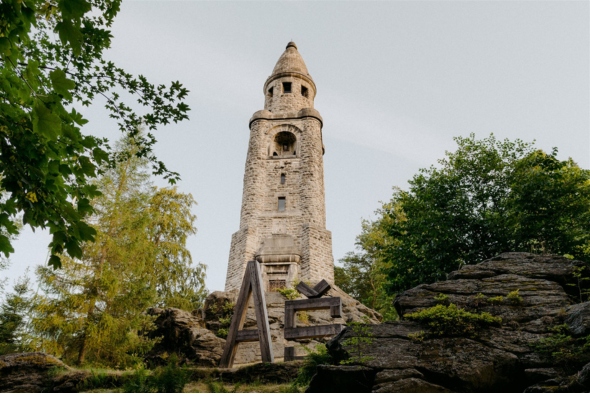
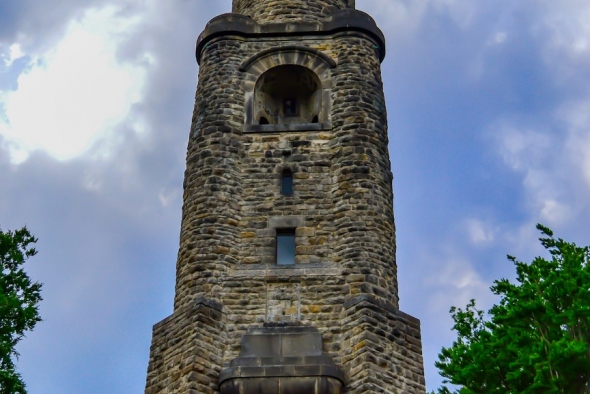
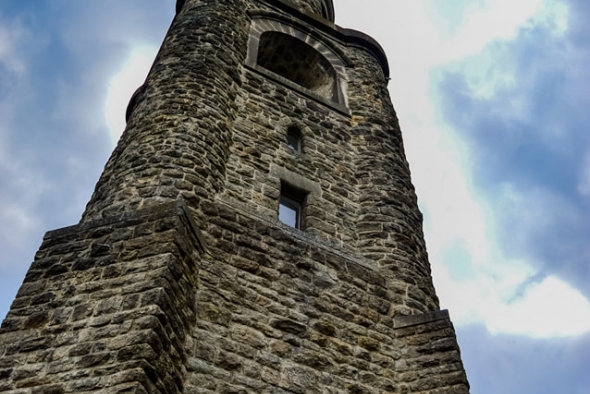
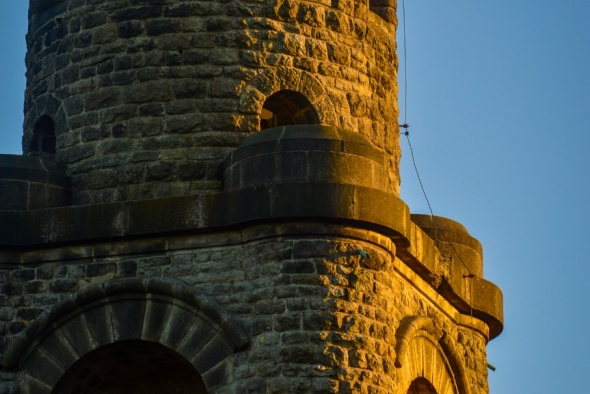
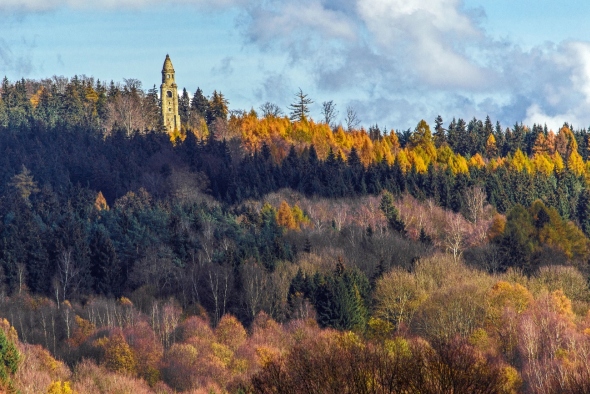
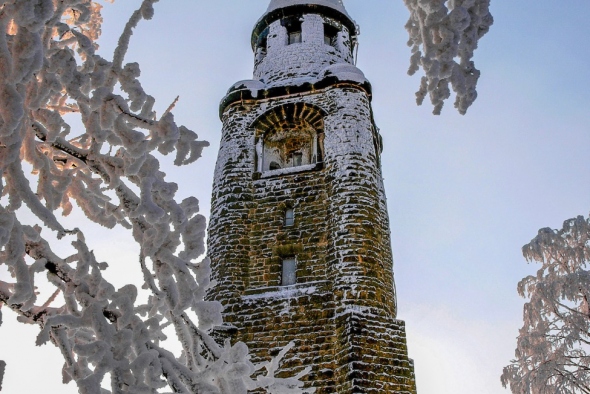
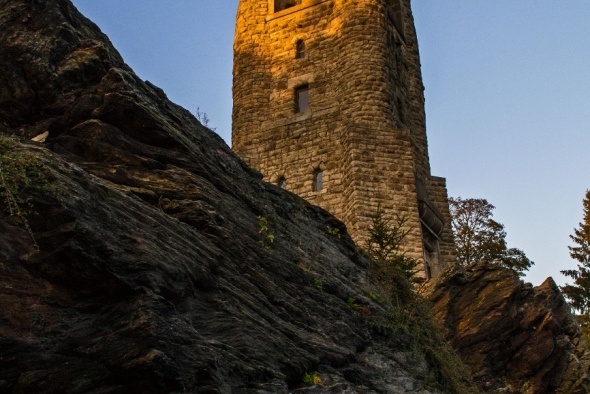
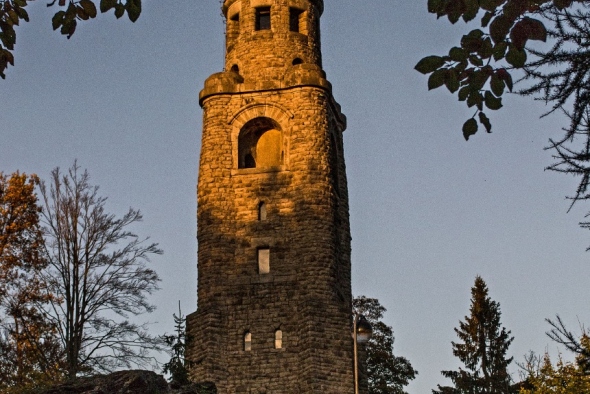
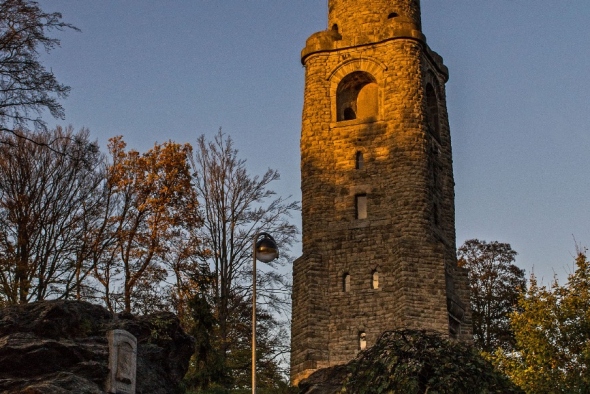
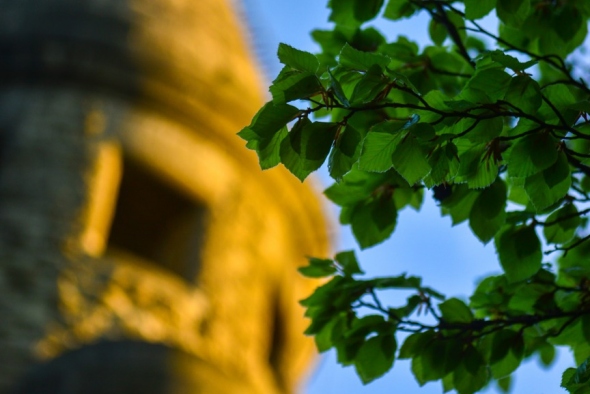
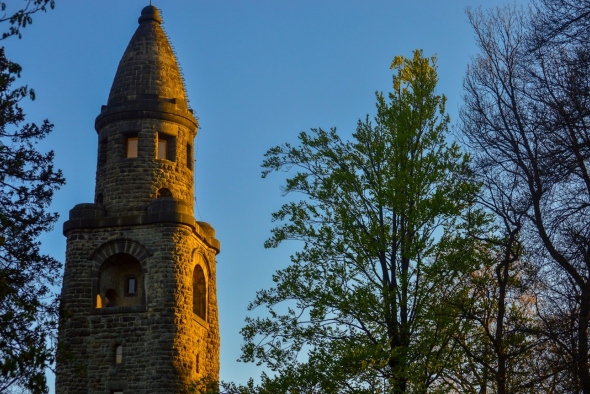
Traffic:
On foot, bike, car, public transport
Distance from IC:
1,9 km
Opening hours:
1.4.-31.10.daily, Mon-Sun: 9:00-17:00, summer months to 19:00
Step into the world of heights and adventure at the Háj lookout tower, where a magical view of the landscape unfolds before you. From this beautiful height, 34 meters above the peak of Háj at an altitude of 758 meters, a panorama that will captivate you awaits.
Utilize the copper plates placed in the eight highest windows of the tower to identify distant treasures. Within arm's reach, you'll find the Green Mountain near Cheb, 20 kilometers away, the Špičák in the Bohemian Forest, and the Ore Mountains with the majestic Klínovec, visible even from a great distance. Your attention will also be drawn to nearby hills, such as Wartberg and Kornberg, and even the highest mountain in the Saxon part of the Ore Mountains, Fichtelberg.
This historical tower was constructed in a record time of 13 months and opened in 1904. Its architect was Wilhelm Kreis from Dresden. The construction used 66 cubic meters of granite blocks, approximately 65,000 bricks, and nearly 60 wagons of limestone. The tower's monumentality literally rose from the ground.
In the tower's highest floor, which you can access after climbing 122 stairs, you can enjoy the surrounding landscape through eight glazed windows. The copper plates on the windowsills will be your guide, showing you the directions and distances to the surrounding mountains and towns.
On the north side, you will be greeted by Saxon towns like Bad Elster and Adorf, Schöneck, and a part of Hranice. When you look to the northeast, a view of the peaks of the Ore Mountains and the highest mountain in the Czech part, Klínovec, will open up. To the southeast, a panorama of the Slavkovský Forest with the summit Lesný and the impressive Dyleň awaits you.
As you gaze to the south, you'll spot Bavarian towns like Hohenberg an der Eger, Arzberg, and Marktredwitz. In the southwest lies the charming town of Schönwald, and looking to the southwest and west will reveal the town of Aš, the westernmost town in the Czech Republic, and the Bavarian town of Rehau.
Come and immerse yourself in this amazing adventure at the Háj lookout tower, where an unparalleled view of the enchanting region between the Czech Republic and Germany unfolds before your eyes!











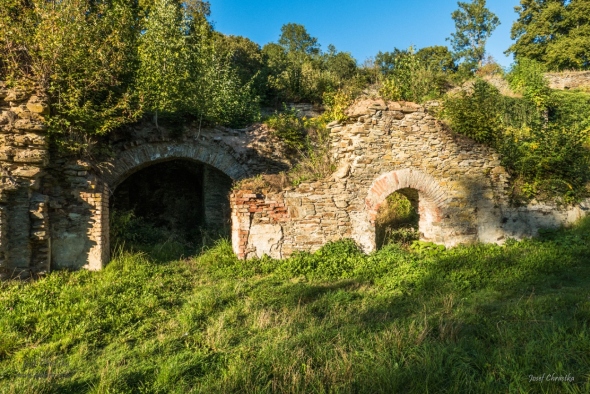
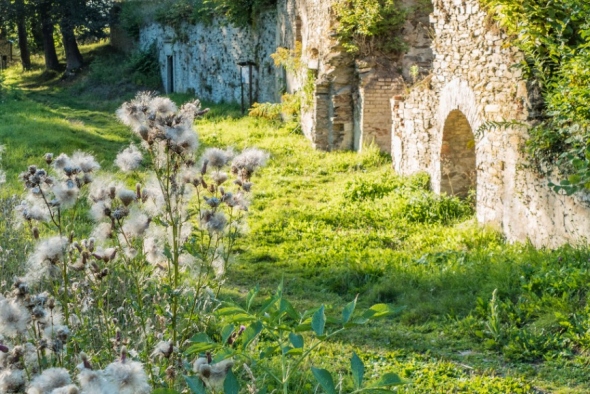
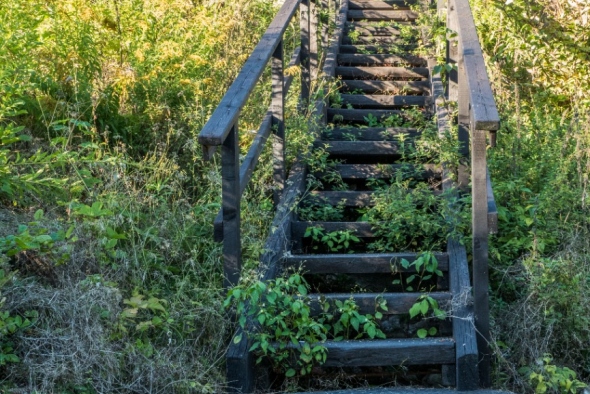
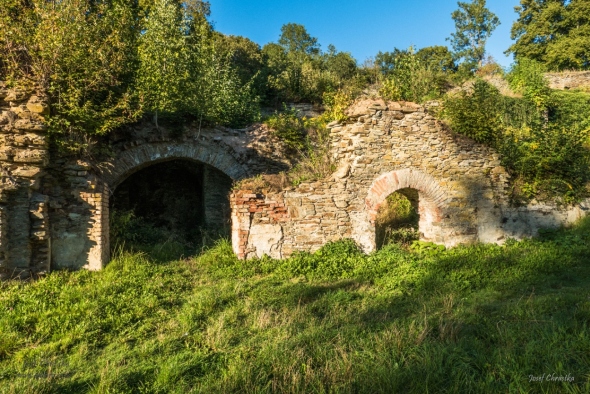
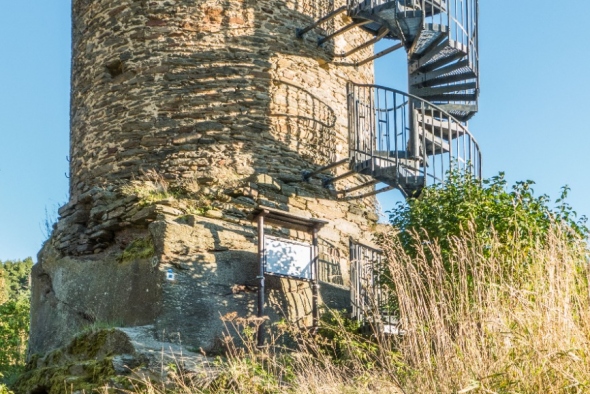
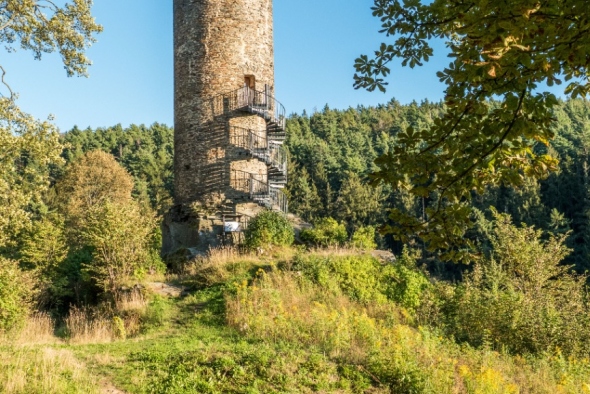
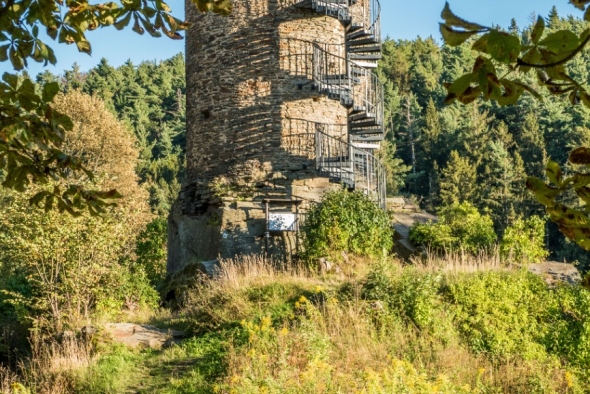
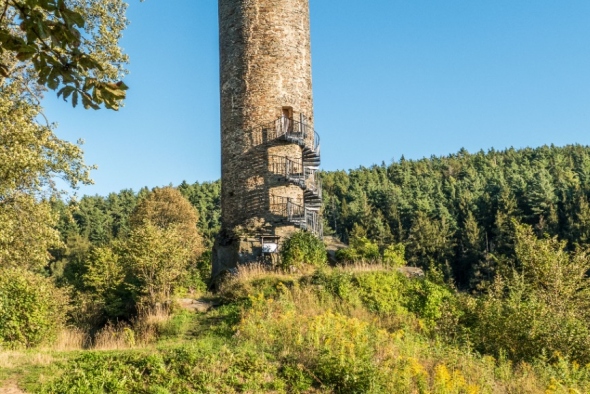
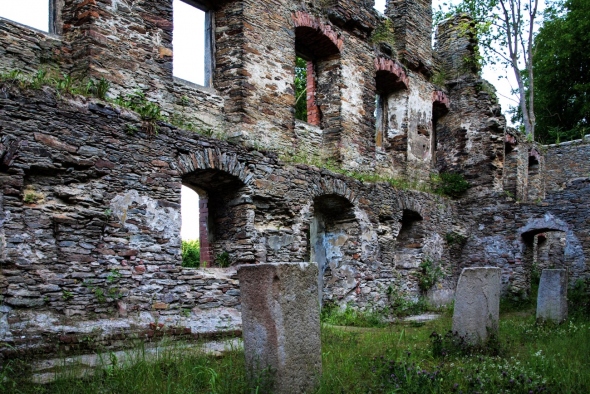
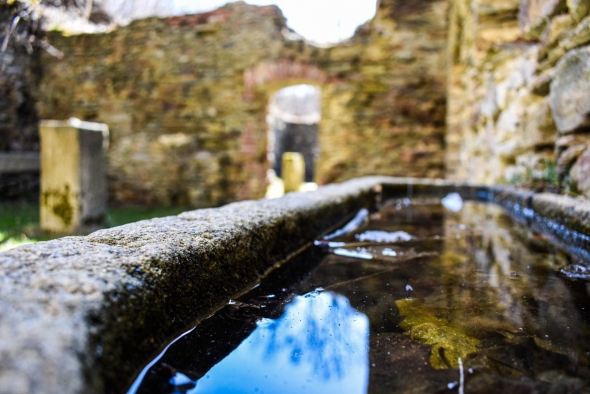
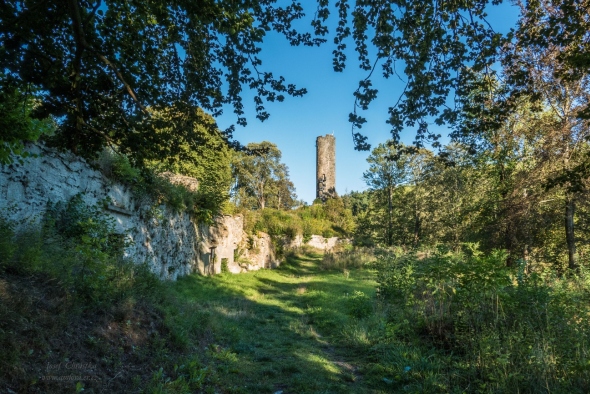
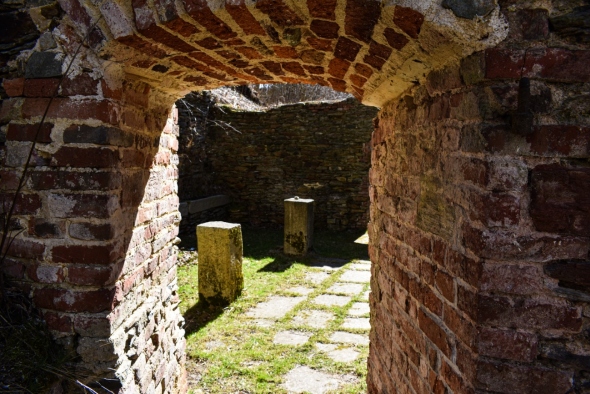
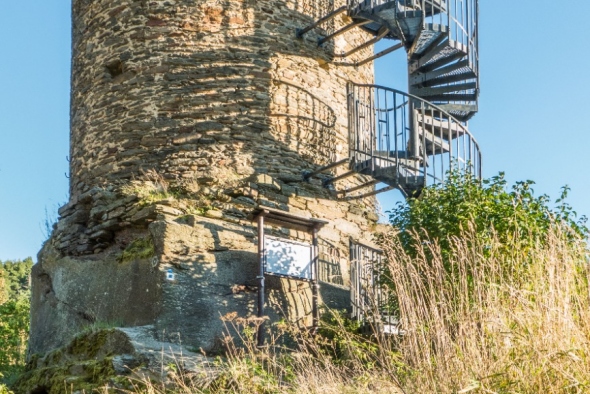
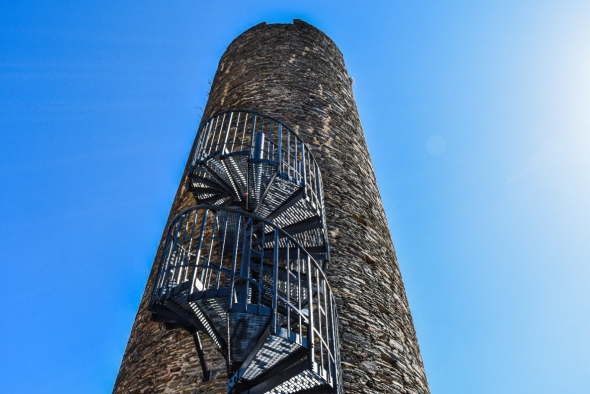
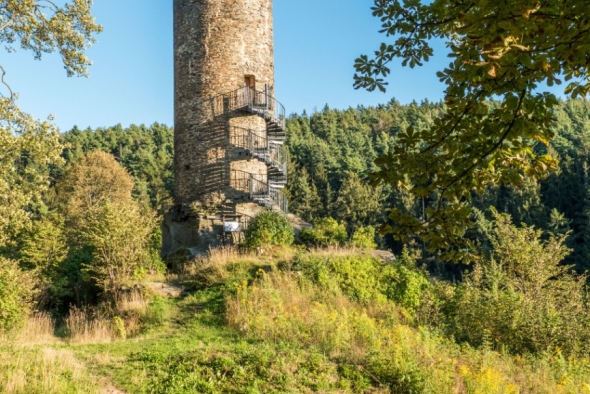
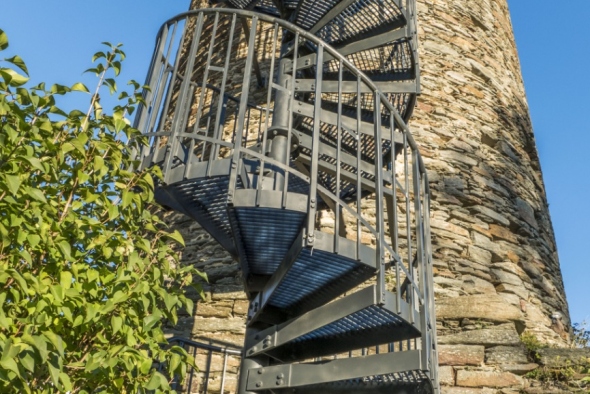
The ruins of the Neuberg castle in Podhradí
















Traffic:
On foot, bike, car, bus
Distance from IC:
5,9 km
Opening hours:
No (tower after borrowing keys at the municipal office)
Welcome to the ruins of Neuberg Castle, a mysterious place founded by the noble Neuberg family probably in the early 13th century. This place, although now in ruins, conceals a rich history and captivating stories.
Even though the first written mention of the castle dates back to 1288, its history is full of adventures and mysteries. The Lords of Plaven acquired the castle from Emperor Rudolf of Habsburg but soon returned it to the Neubergs, marking the beginning of a long-standing relationship with the Zedtwitz family.
Neuberg Castle faced many challenges throughout its existence. It was significantly damaged by the armies of King Charles IV, who exploited its strategic location on the trade routes to Saxony for raids. However, in 1395, the castle became the property of the Zedtwitz family when Conrad of Zedtwitz married Hedwig of Neuberg.
Since then, the Ašsko region began to undergo changes. Religion, especially Lutheranism, gained influence. In close proximity to the castle, the Church of the Good Shepherd was built in the 15th century, adding further historical value to this place.
In 1610, Neuberg Castle burned down and ceased to serve as the residence of the Zedtwitz family. Today, all that remains are ruins with an impressive tower standing on a 29.5-meter-high hill, and the remnants of the surrounding castle. The tower has a height of 22 meters, and the circumference of the tower measures 19.2 meters. Although Neuberg Castle is in ruins, it still offers a fascinating glimpse into the past and invites you to discover its secrets and historical legacy.
Textile Museum in Aš
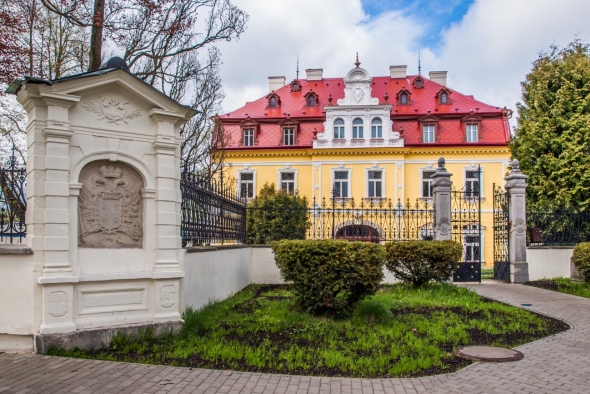
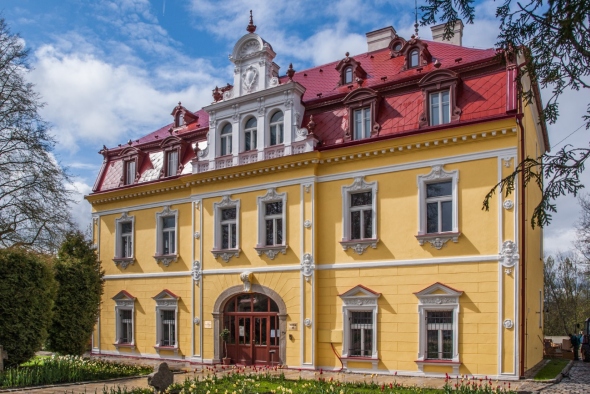
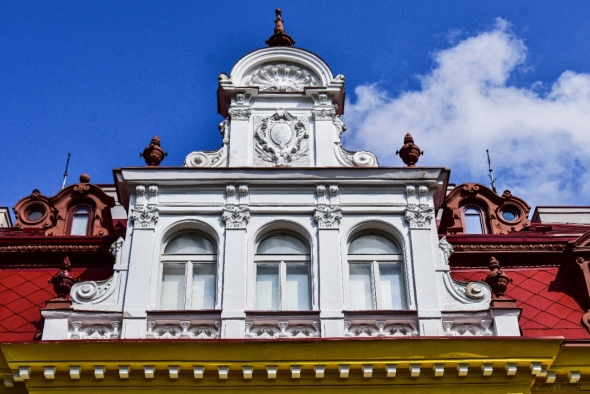
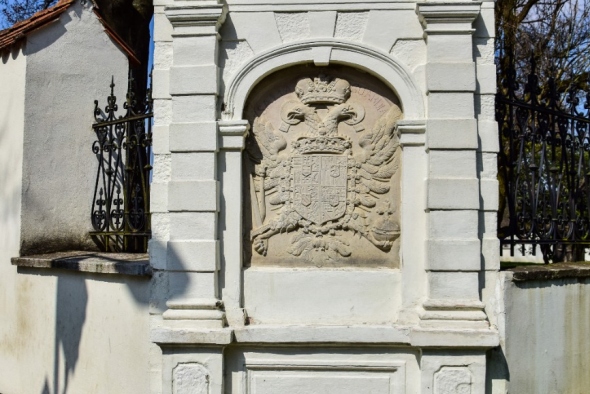
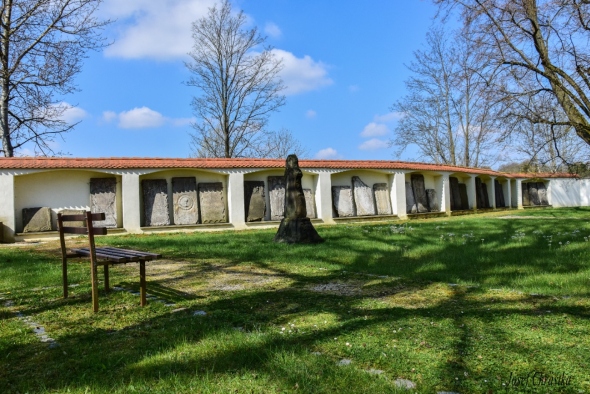
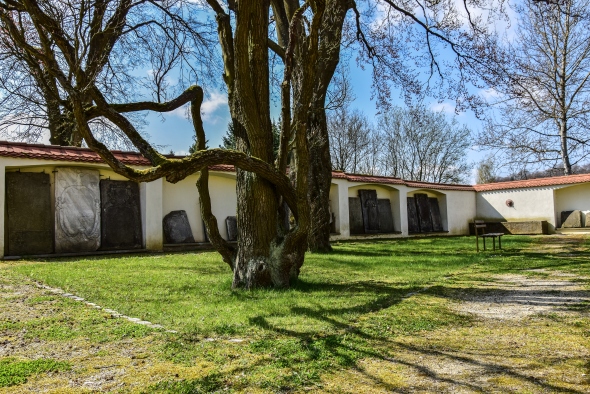
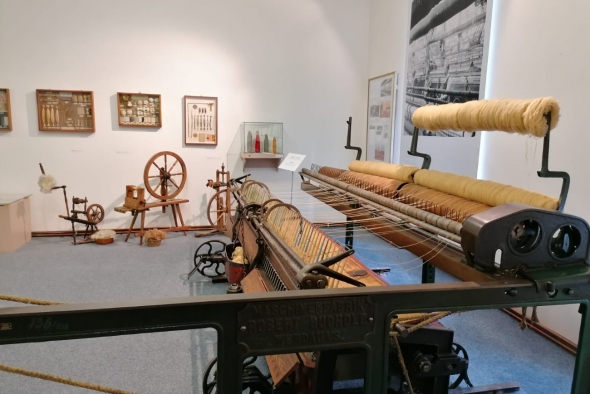
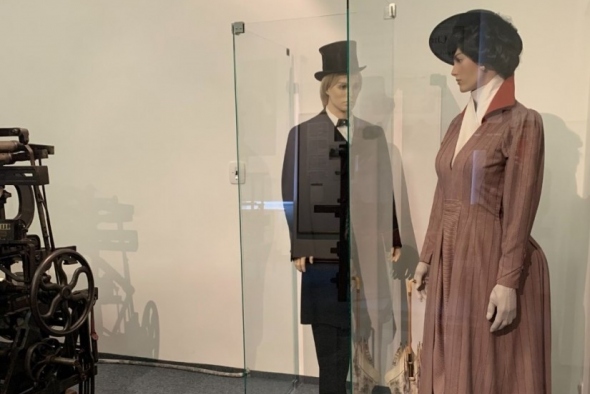
Traffic:
On foot, bike, car
Distance from IC:
304 m
Opening hours:
Mon closed Tue-Fri 9-12 13-17 Sat-Sun 10-17
Welcome to the heart of the Ascher Ländchen, where a fascinating insight into the radiant history of textile production and the important heritage of the region unfolds. Imagine how more than two centuries ago, textile production took its first steps here. In the 18th century, it began to flourish, and with the onset of the industrial revolution, it literally exploded. Even the harsh times after World War II couldn't quench its spirit. Many people might think that the departure of the German population spelled the end of the textile industry in this region, but that is far from the truth.
Factories were nationalized, new people arrived in the borderland, and production continued. This continued until the 1990s when new changes came after the events of 1989, and textile mills began to weaken.
Today, our museum is the sole reminder of the rich history of textile production in Ascher Ländchen. Since the 1970s, it has been collecting all possible documents related to textile production in the region. The museum strives to preserve everything related to the textile industry, from various machines, spinning and weaving looms to knitting frames and gloves. Of course, we must not forget the results of their work, such as beautiful lace, curtains, clothing, aprons, and much more, including gloves. The museum boasts one of the largest collections of textile gloves in Europe, with over 20,000 pieces. Furthermore, you can witness the entire glove production process right here.
However, our museum offers much more than just textile history. As you stroll through this fascinating space, you will also come across records of reconciliation crosses that remind us of important aspects of regional history and the determination to preserve the memory of those who endured difficult times. These crosses, also known as "Versöhnungskreuze," are symbols of reconciliation and hope, erected at sites where tragic events, often associated with war, occurred.
So, if you are planning a trip to Ascher Ländchen, be sure not to miss this fascinating museum. Here, you will not only become acquainted with the rich textile history of the region but also gain insight into the captivating traditions that continue to shape this area. Prepare for an adventurous journey through time and the unraveling of mysteries you will want to thoroughly explore.








This website is using cookies
We Inform you that this site uses cookies. You can find more detailed information about cookies and the processing of personal data in the Privacy Policy and the use of so-called cookies. We hereby ask you for your consent to the use of these cookies.